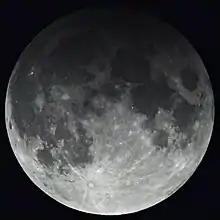| Partial eclipse | |||||||||||||
| Date | 26 July 1972 | ||||||||||||
|---|---|---|---|---|---|---|---|---|---|---|---|---|---|
| Gamma | 0.71167 | ||||||||||||
| Magnitude | 0.54271 | ||||||||||||
| Saros cycle | 138 (27 of 83) | ||||||||||||
| Partiality | 160 minutes, 9.6 seconds | ||||||||||||
| Penumbral | 312 minutes, 32.3 seconds | ||||||||||||
| |||||||||||||
A partial lunar eclipse occurred on Tuesday, July 25, 1972 and Wednesday, July 26, 1972, the second of two lunar eclipses in 1972 with an umbral eclipse magnitude of 0.54271. A partial lunar eclipse occurs when the Earth moves between the Sun and Moon but the three celestial bodies do not form a straight line in space. When that happens, a small part of the Moon's surface is covered by the darkest, central part of the Earth's shadow, called the umbra. The rest of the Moon is covered by the outer part of the Earth's shadow called the penumbra.[1] The moon's apparent diameter was 3.2 arcseconds smaller than the January 30, 1972 lunar eclipse.
Visibility
The partial eclipse was visible in Australia, Pacific, Americas, western Africa, seen rising over eastern Australia on the evening on Wednesday, July 26, 1972 (Tuesday, July 25, 1972 in west of International Date Line) and setting over Atlantic on morning of Wednesday, July 26, 1972.

Relation to other lunar eclipses
Eclipses in 1972
Lunar year series
| Lunar eclipse series sets from 1969–1973 | ||||||||
|---|---|---|---|---|---|---|---|---|
| Ascending node | Descending node | |||||||
| Saros | Date Viewing |
Type Chart |
Gamma | Saros | Date Viewing |
Type Chart |
Gamma | |
| 108 | 1969 Aug 27 |
Penumbral |
−1.54066 | 113 | 1970 Feb 21 |
Partial |
0.96198 | |
| 118 | 1970 Aug 17 |
Partial |
−0.80534 | 123 | 1971 Feb 10 |
Total |
0.27413 | |
| 128 | 1971 Aug 6 |
Total |
−0.07944 | 133 | 1972 Jan 30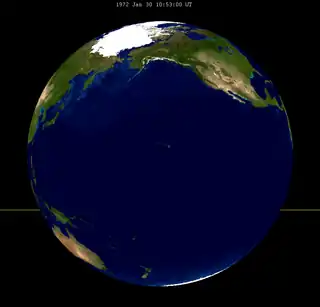 |
Total |
−0.42729 | |
| 138 | 1972 Jul 26 |
Partial |
0.71167 | 143 | 1973 Jan 18 |
Penumbral |
−1.08446 | |
| 148 | 1973 Jul 15 |
Penumbral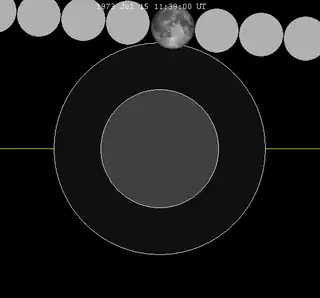 |
1.51782 | |||||
| Last set | 1969 Sep 25 | Last set | 1969 Apr 2 | |||||
| Next set | 1973 Jun 15 | Next set | 1973 Dec 10 | |||||
Half-Saros cycle
A lunar eclipse will be preceded and followed by solar eclipses by 9 years and 5.5 days (a half saros).[2] This lunar eclipse is related to two total solar eclipses of Solar Saros 145.
| July 20, 1963 | July 31, 1981 |
|---|---|
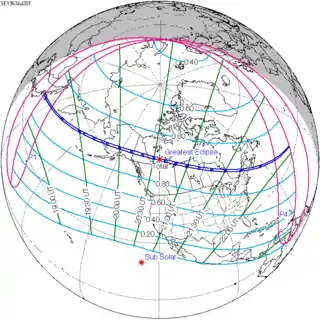 |
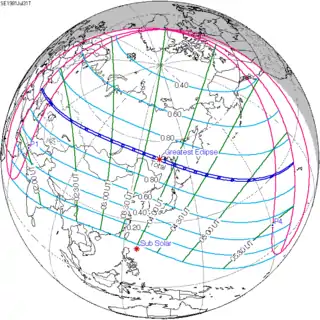 |
See also
Notes
- ↑ Saros series 138
- ↑ Mathematical Astronomy Morsels, Jean Meeus, p.110, Chapter 18, The half-saros
External links
- 1972 Jul 26 chart Eclipse Predictions by Fred Espenak, NASA/GSFC
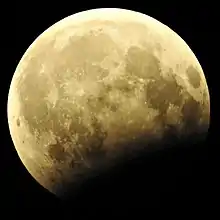
_(cropped).jpg.webp)
